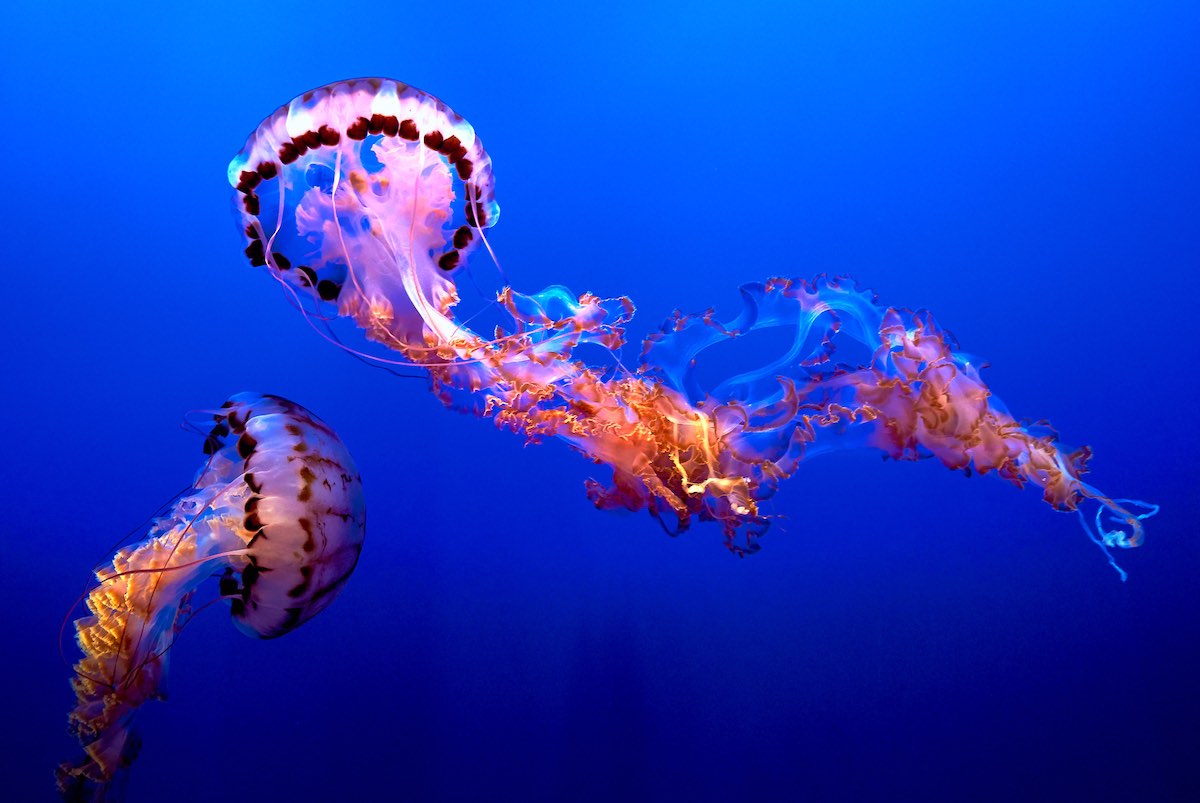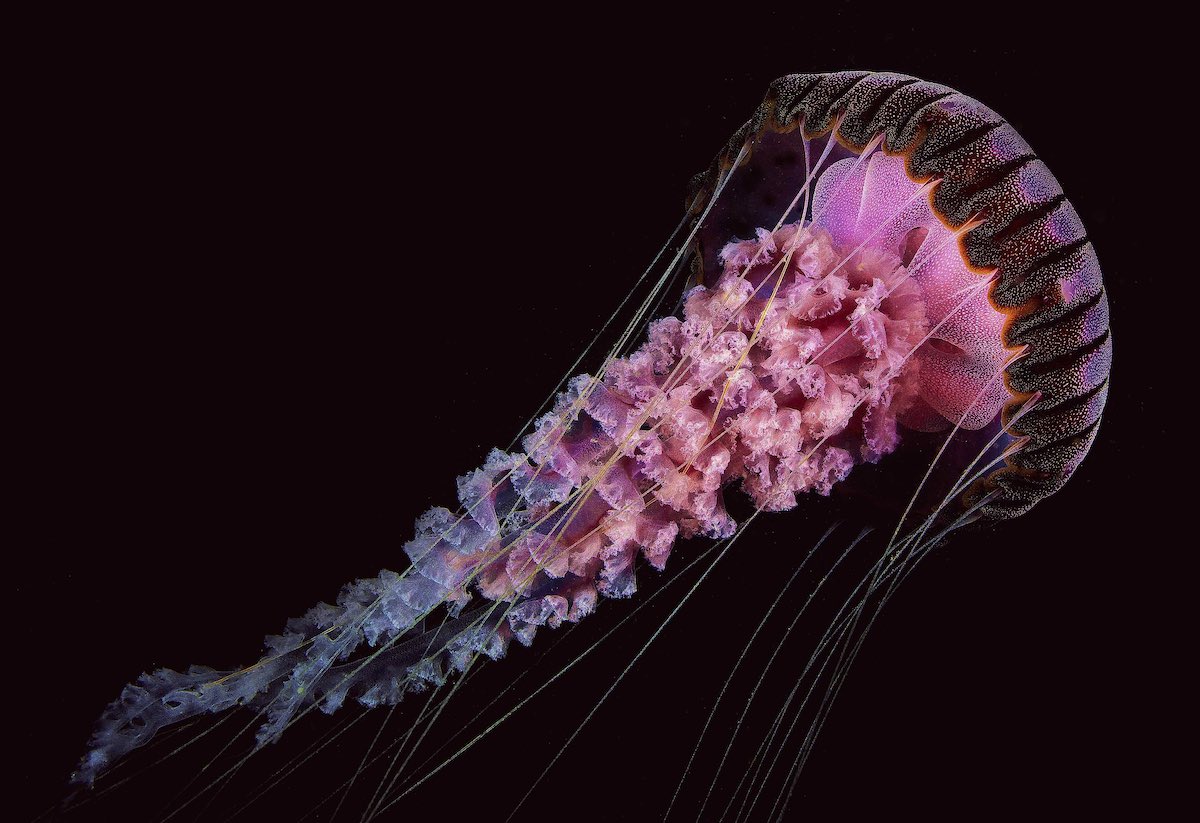How Do Jellyfish Sting?
Learn how stinging animals pack a punch with nematocysts

There are all kinds of strategies animals use to defend themselves and capture prey. Some have sharp teeth and strong jaws, some rely on camouflage and others secrete potent toxins. Nematocysts are one technique used by members of the phylum Cnidaria that really packs a punch.
First things first: what are cnidarians? Members of the phylum Cnidaria are invertebrates, meaning they don’t have a backbone. Cnidarians include corals, jellyfish, anemones and hydroids, and there are more than 11,000 species found all over the world. Cnidarians are recognizable by their radial symmetry and bodies made of two layers of living tissue with a gelatinous layer in-between.
Nematocysts are small stinging cells that resemble tiny harpoons and are a defining characteristic of cnidarians. There are about 30 different types of nematocysts which can be used to ward off predators, secure prey and (sometimes) movement. The name “nematocyst” literally means “thread bag”, which describes their structure: sharp spines connected to a long tube stored in a sac on the animal’s surface. Sounds appealing, right?
Nematocyst stay safely in their sacs when the animal is unbothered. But when the animal senses either a physical or chemical disturbance, such as an unsuspecting beach-goer bumping into a jellyfish tentacle, the nematocyst will shoot out of the sac. The entire discharge takes about three milliseconds—faster than you can get away. Those disturbances can even trigger nematocysts after the animal has died or after a tentacle has detached.

Nematocysts can vary based on the species. Some are designed to wrap around an item or stick to a surface, while others contain toxins that can cause serious pain or death. All jellyfish toxins contain a protein called porins, which attack cells in the unfortunate recipient of a sting. Depending on the amount and proportion of porins, the stings can cause redness and swelling or something much, much worse. Don’t panic if you’re stung. Instead, pluck off any visible tentacles and douse the area in vinegar. Contrary to popular belief, you definitely shouldn’t pour alcohol on it or have a friend pee on you.
Australian box jellyfish, also known as sea wasps, are considered the one of the most venomous animals in the ocean. Their nematocysts contain a potent toxin that attacks the heart, nerves and skin and can cause serious pain or death. Instead of going into deep detail about box jellyfish stings, let’s just say you want to avoid it. Fortunately, most cnidarians are not as venomous, but it’s a good idea to give all animals their space regardless.
Next time you see a jellyfish or anemone, you’ll know they’re so much more than their gelatinous bodies and cool colors. They’re actually harpoon-packing, quick-drawing, backbone-less badasses that aren’t to be messed with.